
How to Use Modulo Expancion Dvr8825: Examples, Pinouts, and Specs
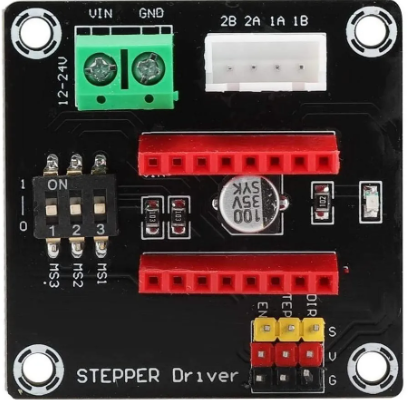
 Design with Modulo Expancion Dvr8825 in Cirkit Designer
Design with Modulo Expancion Dvr8825 in Cirkit DesignerIntroduction
The DVR8825 is a high-performance stepper motor driver designed for precise control of stepper motors. It supports adjustable current control, microstepping (up to 1/32 steps), and includes built-in thermal shutdown protection. This makes it an ideal choice for applications requiring accurate motor control, such as robotics, 3D printers, CNC machines, and other automation systems.
Explore Projects Built with Modulo Expancion Dvr8825
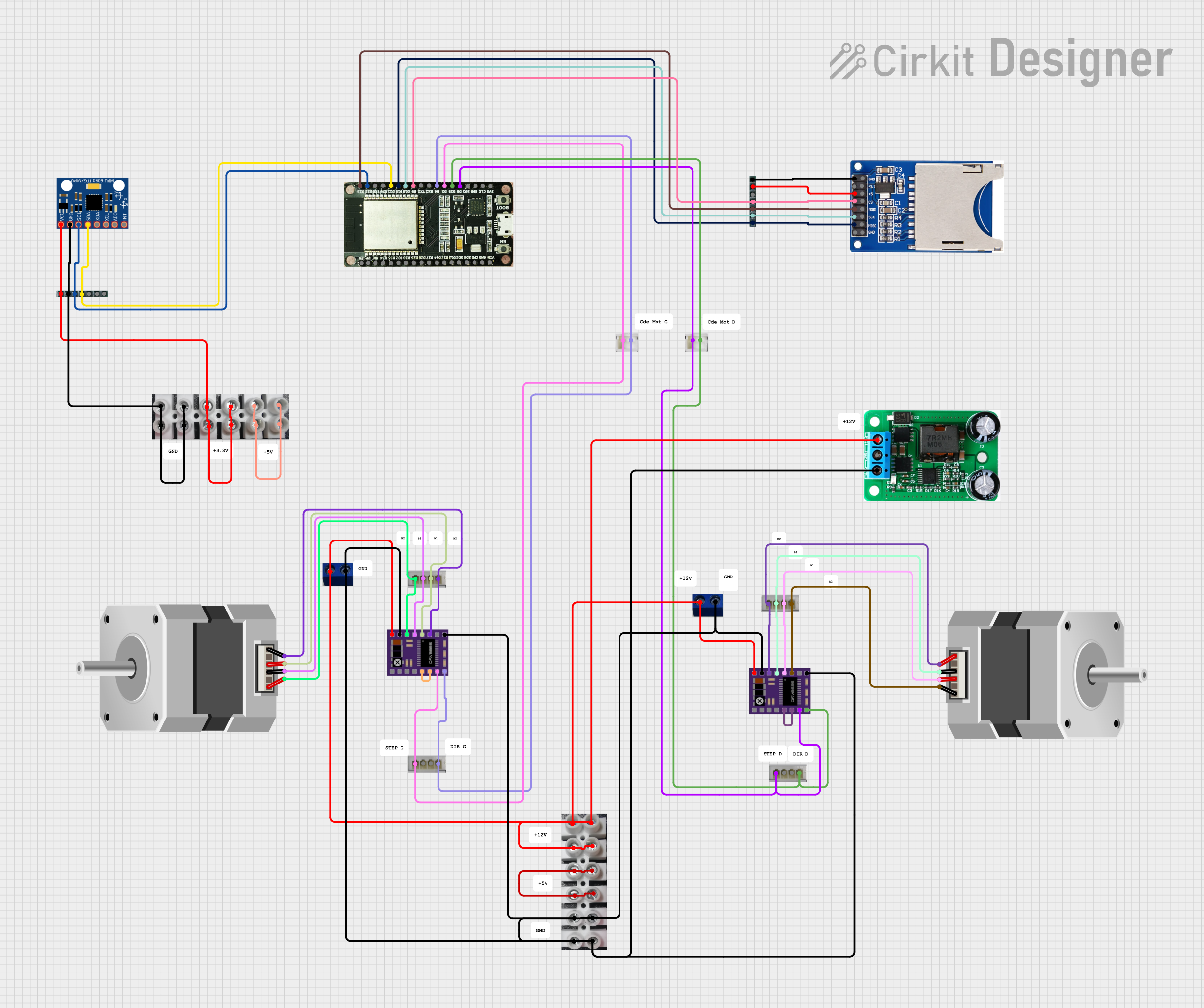
 Open Project in Cirkit Designer
Open Project in Cirkit Designer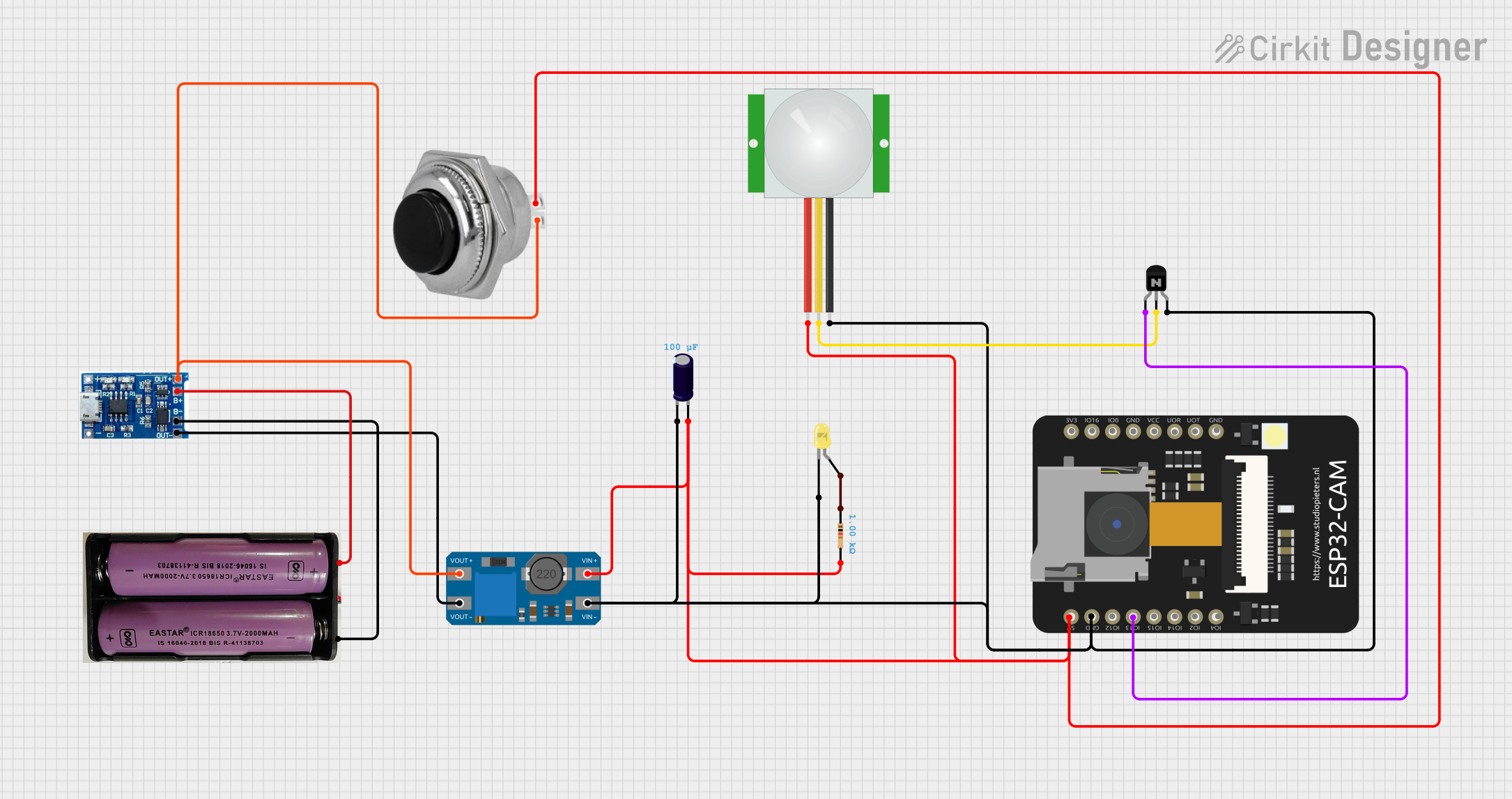
 Open Project in Cirkit Designer
Open Project in Cirkit Designer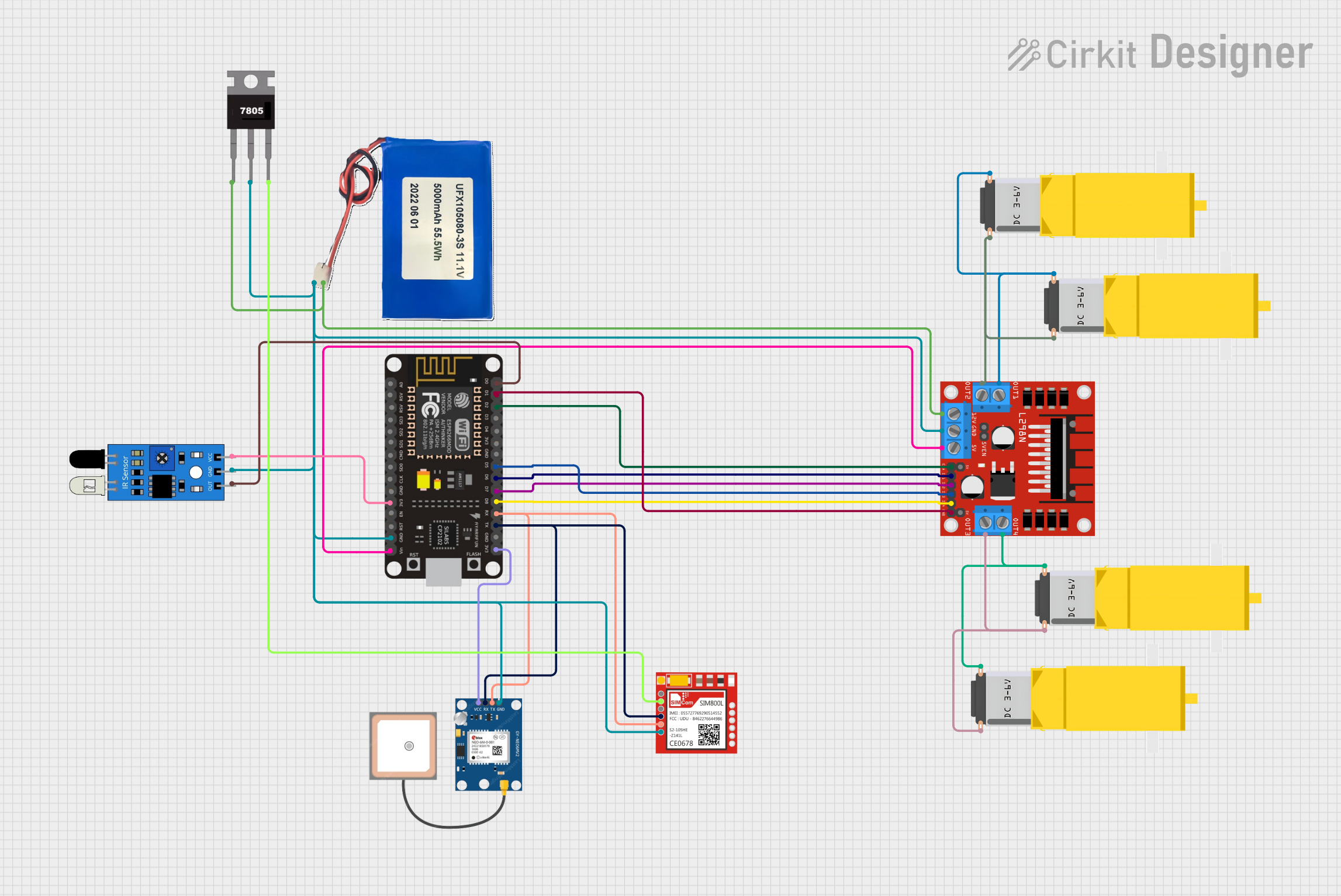
 Open Project in Cirkit Designer
Open Project in Cirkit Designer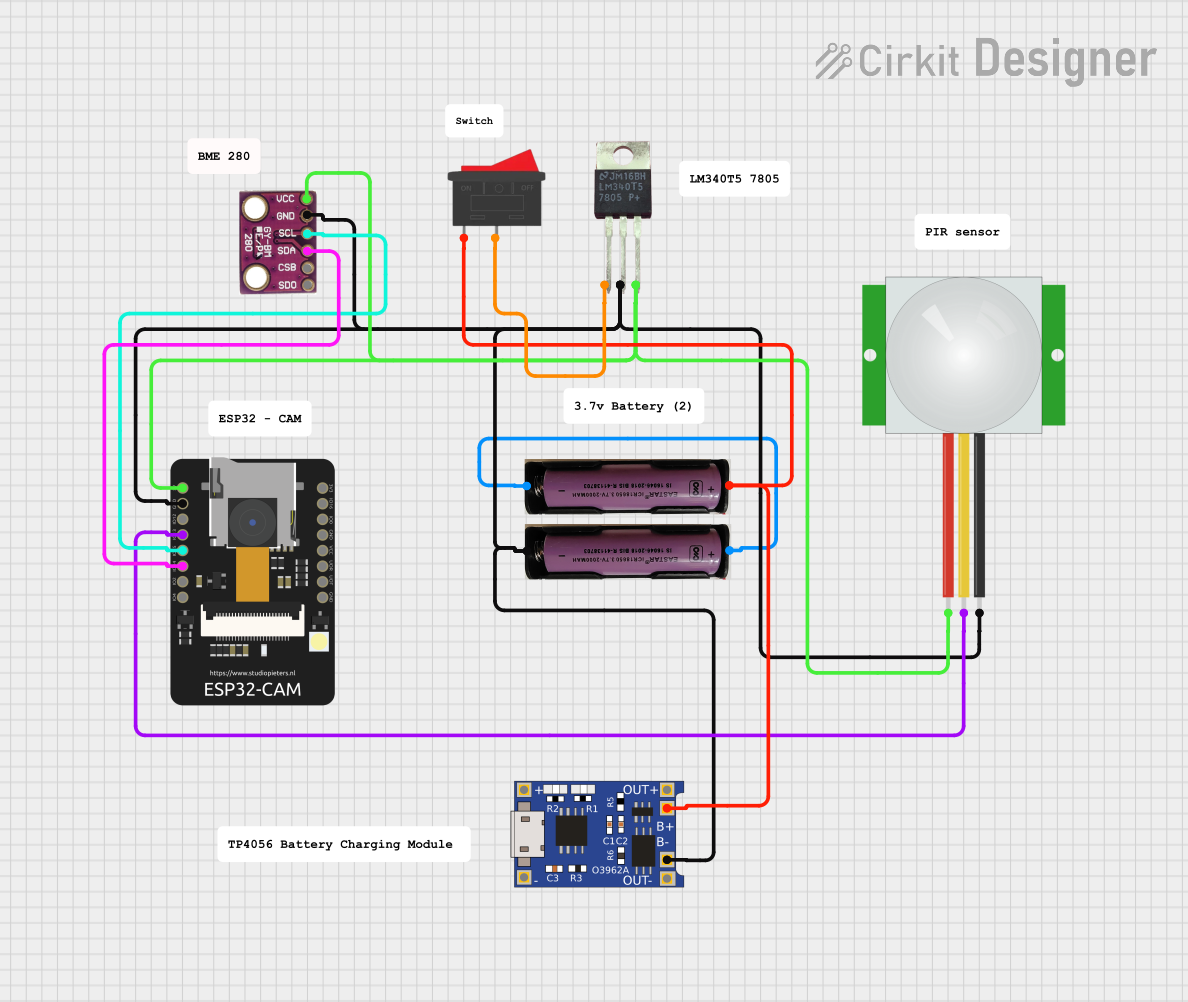
 Open Project in Cirkit Designer
Open Project in Cirkit DesignerExplore Projects Built with Modulo Expancion Dvr8825

 Open Project in Cirkit Designer
Open Project in Cirkit Designer
 Open Project in Cirkit Designer
Open Project in Cirkit Designer
 Open Project in Cirkit Designer
Open Project in Cirkit Designer
 Open Project in Cirkit Designer
Open Project in Cirkit DesignerCommon Applications
- Robotics and automation
- 3D printers
- CNC machines
- Camera sliders and gimbals
- Precision positioning systems
Technical Specifications
The DVR8825 offers robust performance and flexibility for stepper motor control. Below are its key technical specifications:
| Parameter | Value |
|---|---|
| Motor Voltage (VMOT) | 8.2V to 45V |
| Logic Voltage (VDD) | 3.3V or 5V |
| Maximum Current per Phase | 2.2A (with sufficient cooling) |
| Microstepping Modes | Full, 1/2, 1/4, 1/8, 1/16, 1/32 |
| Thermal Shutdown | Yes |
| Overcurrent Protection | Yes |
| Dimensions | 15mm x 20mm |
Pin Configuration and Descriptions
The DVR8825 module has 16 pins. Below is the pinout and description:
| Pin Name | Type | Description |
|---|---|---|
| VMOT | Power Input | Motor power supply (8.2V to 45V). Connect a capacitor (100µF or higher) nearby. |
| GND | Power Ground | Ground connection for motor power supply. |
| VDD | Power Input | Logic power supply (3.3V or 5V). |
| GND | Power Ground | Ground connection for logic power supply. |
| STEP | Input | Step signal input. Each pulse moves the motor one step. |
| DIR | Input | Direction control input. High/Low determines motor rotation direction. |
| ENABLE | Input | Enable/disable the driver. Low = enabled, High = disabled. |
| MS1, MS2, MS3 | Input | Microstepping mode selection pins. |
| RESET | Input | Resets the driver. Active low. |
| SLEEP | Input | Puts the driver into low-power sleep mode. Active low. |
| FAULT | Output | Fault indicator. Low when a fault condition occurs. |
| A1, A2 | Output | Outputs for motor coil A. |
| B1, B2 | Output | Outputs for motor coil B. |
Microstepping Configuration
The microstepping mode is configured using the MS1, MS2, and MS3 pins. The table below shows the settings:
| MS1 | MS2 | MS3 | Microstepping Mode |
|---|---|---|---|
| Low | Low | Low | Full Step |
| High | Low | Low | 1/2 Step |
| Low | High | Low | 1/4 Step |
| High | High | Low | 1/8 Step |
| Low | Low | High | 1/16 Step |
| High | High | High | 1/32 Step |
Usage Instructions
Connecting the DVR8825 to a Stepper Motor
- Power Supply: Connect VMOT and GND to the motor power supply (8.2V to 45V). Add a capacitor (100µF or higher) across these pins to prevent voltage spikes.
- Logic Power: Connect VDD and GND to the logic power supply (3.3V or 5V).
- Motor Connections: Connect the stepper motor coils to A1, A2, B1, and B2. Ensure the correct pairing of motor wires.
- Control Pins: Connect STEP, DIR, and ENABLE to your microcontroller or control circuit. Use pull-up or pull-down resistors if necessary.
- Microstepping: Set MS1, MS2, and MS3 to configure the desired microstepping mode.
- Optional Pins: Connect RESET and SLEEP if you need to use these features. Otherwise, tie them to VDD to keep the driver active.
Example: Using the DVR8825 with Arduino UNO
Below is an example of how to control a stepper motor using the DVR8825 and an Arduino UNO:
Wiring Diagram
- VMOT: Connect to a 12V power supply.
- GND (VMOT): Connect to the power supply ground.
- VDD: Connect to the Arduino 5V pin.
- GND (VDD): Connect to the Arduino GND pin.
- STEP: Connect to Arduino pin 3.
- DIR: Connect to Arduino pin 4.
- ENABLE: Connect to Arduino pin 5 (optional, can be tied to GND for always enabled).
Arduino Code
// Define pin connections
#define STEP_PIN 3 // Pin connected to STEP
#define DIR_PIN 4 // Pin connected to DIR
#define ENABLE_PIN 5 // Pin connected to ENABLE (optional)
void setup() {
// Set pin modes
pinMode(STEP_PIN, OUTPUT);
pinMode(DIR_PIN, OUTPUT);
pinMode(ENABLE_PIN, OUTPUT);
// Enable the driver
digitalWrite(ENABLE_PIN, LOW); // LOW = enabled
}
void loop() {
// Set direction
digitalWrite(DIR_PIN, HIGH); // HIGH = one direction, LOW = opposite
// Generate step pulses
for (int i = 0; i < 200; i++) { // 200 steps for one revolution (1.8°/step motor)
digitalWrite(STEP_PIN, HIGH);
delayMicroseconds(500); // Adjust for speed
digitalWrite(STEP_PIN, LOW);
delayMicroseconds(500);
}
delay(1000); // Wait 1 second before reversing direction
// Reverse direction
digitalWrite(DIR_PIN, LOW);
for (int i = 0; i < 200; i++) {
digitalWrite(STEP_PIN, HIGH);
delayMicroseconds(500);
digitalWrite(STEP_PIN, LOW);
delayMicroseconds(500);
}
delay(1000); // Wait 1 second before repeating
}
Best Practices
- Use a heatsink or active cooling if driving motors at high current.
- Always power the logic circuit (VDD) before the motor power (VMOT) to avoid damage.
- Avoid disconnecting the motor while the driver is powered to prevent damage to the driver.
Troubleshooting and FAQs
Common Issues
Motor Not Moving:
- Check the power supply connections (VMOT and VDD).
- Verify the STEP and DIR signals from the microcontroller.
- Ensure the motor wires are correctly paired and connected.
Overheating:
- Use a heatsink or active cooling.
- Reduce the current limit using the potentiometer.
Driver Not Enabling:
- Ensure the ENABLE pin is set to LOW.
- Check the logic power supply (VDD).
Erratic Motor Movement:
- Verify the microstepping configuration (MS1, MS2, MS3).
- Check for loose or incorrect wiring.
FAQs
Q: How do I set the current limit?
A: Adjust the potentiometer on the DVR8825 while monitoring the reference voltage (VREF). Use the formula:Current Limit = VREF × 2 (for full-step mode).
Q: Can I use the DVR8825 with a 3.3V microcontroller?
A: Yes, the DVR8825 supports logic levels of 3.3V and 5V.
Q: What happens if the driver overheats?
A: The DVR8825 has thermal shutdown protection. It will disable itself until the temperature drops to a safe level.